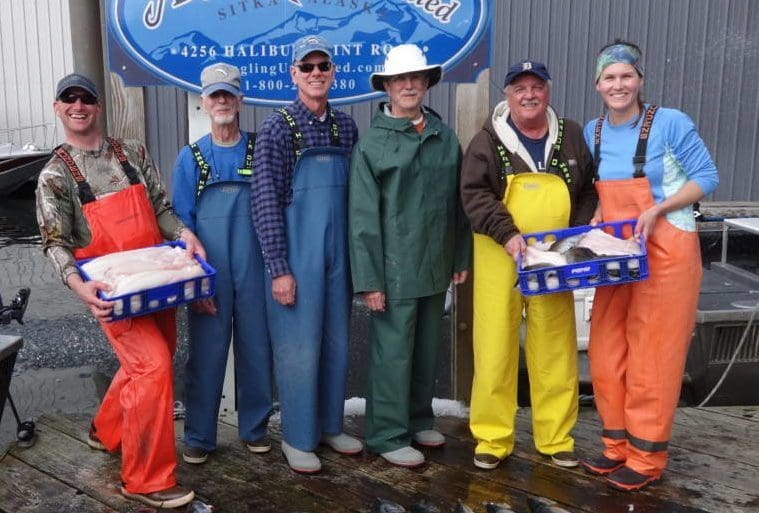Observations on Clothes and Climate on the North Pacific:
Packing for your fishing trip to Sitka and wondering what to bring? Here are a few observations and suggestions based on 30 years of guiding on the North Pacific.
- The temperature tells only part of the story. Yes, 58 or 60 degrees doesn’t sound that cold, but add a little wind and some marine moisture – it feels a lot colder, especially if you’ve arrived from a warm summer climate.
- Warm winds are very rare in on the North Pacific. The flow generally comes from the water and that means cool and damp. A t-shirt day quickly morphs to a multiple layer day including a wind breaker when you go from dead calm to even a gentle breeze. An outer wind breaker layer is essential.
- Many of the synthetic layering clothes tout that they wick moisture out, but they also seem to wick it in. You’ll seldom experience the problem of having to wick sweat away from your base layer on a chilly fishing day, but you’ll regularly experience outside moisture. The synthetics seem to require that you to generate body heat, which happens when you have a big fish on, but your level of output will not be comparable to jogging, cross country skiing or bicycling.
What I Wear:
On a normal summer day, from the belt down it’s jeans, wool socks, and rubber boots. If the weather is particularly cold or stormy, I wear Patagonia long johns that are ultra-thin and comfortable and just warm enough. Above the waist it’s a long sleeve light merino wool shirt, then as many layers of progressively heavier wool layers – up to 3 more on a cold day. Ibex was the company I bought all these layers from, but sadly they recently went out of business. There are other companies making similar products – like Smartwool. The take away is that wool works much better than synthetics in my opinion. It’s warmer and stays that way when wet. It doesn’t require you to generate body heat by exercising to keep you warm.
My outer layer on warmer days is a Simms Fall Run jacket which has a wind breaking outer shell and a light insulating layer of synthetic insulation. If it’s colder than normal, I go with the Simms Downstream Sweater, which has a wind breaking water resistant shell and even more synthetic insulation. The synthetic insulation works better than down when wet and keeps you warm even if your standing still.
Of course, raingear consisting of rubber rain bibs and jacket are a must. Angling Unlimited provides raingear and rubber boots, so you need not worry about packing those items.


Thank you for explaining that you should bring with you a wind breaker layer when fishing in Alaska. My husband is taking all of us to Alaska to fish for some salmon and we’ve been wondering what we should bring that could keep us warm. I’ll be sure to include this in all of our kits so that we can be prepared for the cool wind on the water.